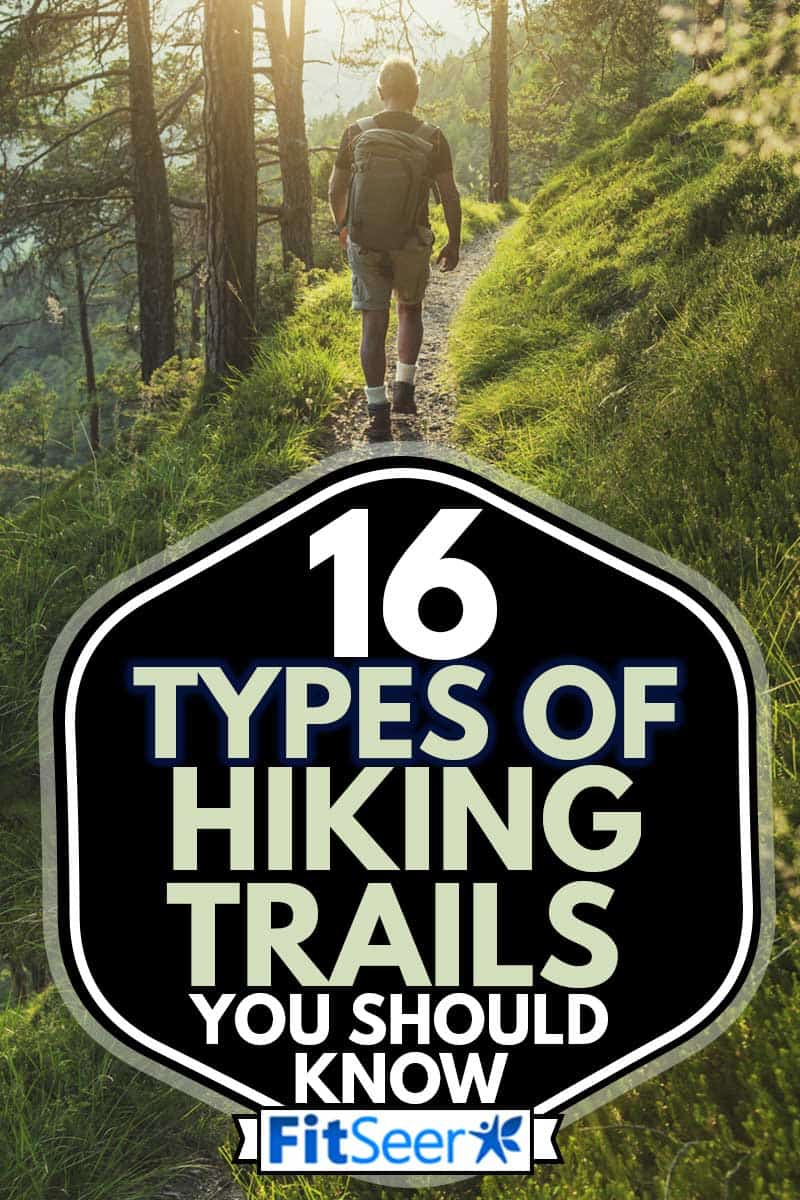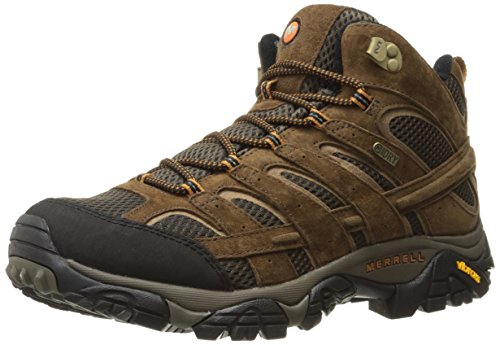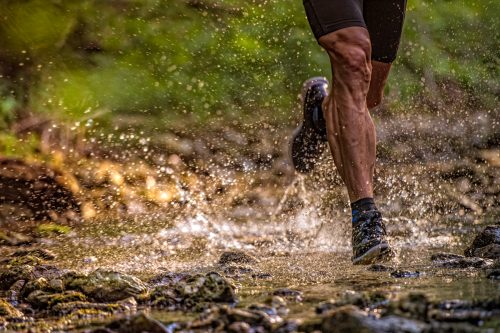You can be new to hiking or be an experienced trekker and still have a lot to learn about the different types of hiking trails. There is a style of the trail to match every individual's needs. Do you know which trail is best suited for you? We have done the research and have laid out an easy-to-read guide to help you choose your type of trail and prepare for your adventure.
A hiking trail could lead you to a destination or back in a loop. You can hike on a paved trail or try your skill in a more primitive environment. Types of hiking trails include:
- Developed trails
- Boot paths, way trails
- Primitive trails
- Abandoned trails
- User-built trails
- Closed trails
- Access trails
- Extended trails
- Directional use trails
- Interpretive trails
- Loop trails
- Multi-use trails
- Single-track trails
- Hiker-biker trails
- Destination trails
- Rail trails
Let's find you some inspiration to get your hiking shoes on. Each type of trail will have varying levels of difficulty and time required to complete. Keep reading as we provide examples of these trails and what equipment you may need.

The Basics
When planning a hike, you should consider the conditions, environment, and terrain of the trail, as well as your personal skills and limitations. For any type of hike, you need to be equipped with basic gear. Read our blog post, "Hiking Gear List For Beginners: 10 Must-Have Items," to learn more about the essentials for your hike.
Developed trail
A developed hiking trail is one that has regular maintenance performed by a sanctioned land manager. This type of trail will be the most common. They have been created to walk through wilderness with ease. The terrain of the trail will change depending on your location. You could be hiking on stairs, gravel, or a dirt path. It is always best to research your trail before your trip.
The Trading Post trail in Colorado is a 1.5 mile long developed trail. This trail showcases Colorado's wildflowers and is great for beginners.
[/PIN]
Hiking on a developed trail does not require special equipment, but you should have some basics like a snack, water, and sunscreen.
Boot paths, way trail
Boot paths or way trails are created from countless footsteps walking the same route over the years. These trails are not maintained or owned. You won't find these pathways on a map, and they will lack trailheads or markers.
One good example is Grand Teton National Park. Other hikers have noted numerous boot paths in this park. You won't find them displayed on a map but, part of the fun of way trails is exploring them for yourself.
This type of trail is for the intermediate hiker. You will want to invest in quality hiking boots for this type of trail due to natural erosion and other environmental aspects.
You can find hiking boots here on Amazon.
Primitive trails
Primitive trails are part of the official trail system, but they are not maintained. These paths may lack signs, and you have a higher chance of running into obstructions or other obstacles.
The trail to Jackson Falls in the Shawnee National Forest is a well known primitive trail. Having a trail length of about 4 miles and ending at a beautiful waterfall, Jackson Falls is a great trail for beginner to intermediate hikers. You can view more details about this scenic trail here.
Due to these trails' overgrown nature and the higher chance of running into a blocked road, these hikes could become difficult. You may want to be equipped with a pocket knife and long clothing for protection on these trails.
Amazon offers a pocket knife and multi-tool here.
Abandoned trail
Abandoned trails are trails that were once part of the main trail but have been since rerouted. These trails will not receive any maintenance and will lack signs and indicators.
Abandoned trails are subject to dangerous conditions. Typically, there was a reason the path was rerouted, and due to the lack of maintenance, you will deal with debris and overgrown pathways.
Leroy Creek High Route is an outstanding, abandoned trail - perfect for the intermediate hiker. This trail is 9 miles long and will take you to an elevation of 2,500 ft.
If you are going down an abandoned trail, be sure to wear long clothing and bring your pocket knife. Due to the possible hazards, you should also have a small first aid kit.
You can find a small first aid kit here on Amazon.
User-built trail
A user-built trail is also known as a bootleg trail. These trails are not regulated or created by land managers and can impose a threat to the environment. These trails are found in sensitive areas and tend to be unsafe for hikers.
Bootleg hiking trails will be marked with signs stating it is not a trail or be blocked off with rocks and branches. All hikers should avoid these trails.
Closed trail
You may come across a trail marked "closed" on your path. A closed trail is one that was once maintained and part of the trail circuit but has been replaced or moved.
Like user-built trails, closed trails are not to be hiked on. They can have hazardous conditions or might be disturbing natural life in the environment. Closed trails will have obvious indications in front of them, like a sign or freshly planted foliage.
Access trail
An access trail will link you to other main trails, towns, or roads. These types of paths are great for any skill level hiker. You have the option to hike and camp multiple days or enjoy a day hike through a specific section of the trail.
Be sure to wear weather-appropriate clothing and bring along food and water in your hiking backpack. Amazon offers a hydration backpack here, allowing you to carry a water supply easily.
Click here to see this on Amazon.
The Appalachian Trail is a popular access trail, spanning through multiple states with many stopping points. This 2,190 miles long famous route can be thru-hiked, hiked by section, or provide you with an easy day hike.
Extended trail
An extended trail is defined by being over 100 miles in length. If you are hiking an extended trail, you will be taking multiple days or weeks to complete it. Due to the length and preparations needed to hike an extended trail, these paths are considered advanced. You should be a skilled trekker or accompanied by one.
The Superior Hiking trail in Michigan is a breath-taking, lakeside, 310-mile hike and is a prime example of an extended trail hike.
Depending on how long your trail is, you will need the following supplies:
- Water filter or water source/Food
- Clothing
- Proper hiking boots
- Small first aid kit
- Sleeping bag/tent supplies
- Rope
- Pocket knife
- Lighter/fire starter
- Toiletries
These are just some basic supplies. You should research the environment your extended trail will be in to pack properly. With more supplies, you will want a proper backpack to carry them in.
Check out this hiking backpack on Amazon.
Directional use trail
Directional use trails are designed to keep its guests on one side moving uphill and the opposite side moving downhill. This minimizes traffic on the trail. Directional use trails stop congestion and allow for a more narrow pathway.
The Sunnyside Trail in Colorado is a 1o mile long, directional use trail. It has been created to accommodate both hikers and cyclists.
This type of trail has high traffic. The difficulty will vary with terrain, but these paths can typically accommodate any skill level of hiker. Bring water, sunscreen, a snack, and appropriate shoes along with you on these trails.
Interpretive trails
An interpretive trail could be called a nature trail. These paths are designed to showcase interesting plants and other natural attractions. An interpretive trail will have signs and labels to give you an informed walkthrough, or you'll be given an informational pamphlet.
Willowbrook Wildlife Center in Illinois has an educational nature trail. This path is less than 2 miles long and is packed with information and educational exhibits.
Interpretive trails are ideal for groups, children, and beginner hikers. The short distance and paved or well-maintained trail create a relaxed, scenic hike.
Loop trail
A loop trail will provide a closed circuit pathway. This trail will start and end at the same point. Expect these trails to have low difficulty and beautiful scenery.
Rodak nature loop in Alaska will provide informational signs and endless flora and fauna. It is a beautiful 0.6 miles long, river-side hike.
Multi-use trail
Expect to see cyclists, equestrians, and other hikers on a multiple-use trail. These trails will be paved with asphalt, gravel, or stone dust. Multi-use trails have heavier traffic and are highly maintained, making them available to all skill level hikers.
The Santa Maria Valley trail is a 5.5 mile, multi-use trail in California that is accessible all year round. This flat out-and-back trail is great for a leisurely hike.
Single-track trail
A single-track trail is made to be very narrow. The width accommodates one person on the path; you will need to stop to allow others to pass. Single-track trails can be challenging. They are not paved, and you may need to pass cyclists on your journey.
Being equipped with hiking poles can accommodate you in the changing terrain.
You can find trekking poles here on Amazon.
Stonewall Falls in Northern Georgia is an 11- mile hike for the intermediate trekker. It's a single-track trail bringing you to a beautiful waterfall.
Hiker-biker trail
A hiker-biker trail is a paved path made for cyclists and hikers. These paths will have maintenance regularly. Being wider, you can pass others on the path with ease.
The Sneath-Lane path is a 1.5-hour hike in California, offering beautiful sites on a paved trail for beginner hikers.
Destination trail
A destination trail will start at a trailhead and end at your point of interest. You will hike back out the same way. Destination trails can lead you to a scenic landmark, a campsite, and more.
The McKinick Trail is a 7-mile hike that will bring you to an outstanding view overlooking the town of Sandpoint and the surrounding mountains.
Rail trail
Looking to explore inactive railroad paths? Rail trails are created to run along or on old railroad tracks. These railway conversions frequently run through historical areas. These trails are great for beginner to intermediate hikers as they are long, flat, and usually paved like a multi-purpose trail.
Some rail trails will take you through tunnels; bringing a headlamp or flashlight can help you navigate these darker areas.
Amazon offers a rechargeable headlamp for hiking here.
The Pinellas Trail in Florida is a famous rail trail spanning over 45 miles. The path will take you through numerous urban areas, creating a safe and easy-going hike.
Time To Get Moving
The world of hiking is vast and filled with adventure. With hikes at every difficulty, there is an opportunity waiting for any skill level hiker. You can experience mountainous views, lakeside hikes, viewpoint destinations, and more! Which type of hiking trail will you choose? We hope this article helped you decide your answer.









![Read more about the article What Can I Use Instead of a Pilates Ring [7 Alternatives]](https://fitseer.com/wp-content/uploads/2022/01/Aerobic-Pilates-stuff-like-mat-balls-roller-magic-ring-rubber-bands-on-wooden-floor-500x333.jpg)




